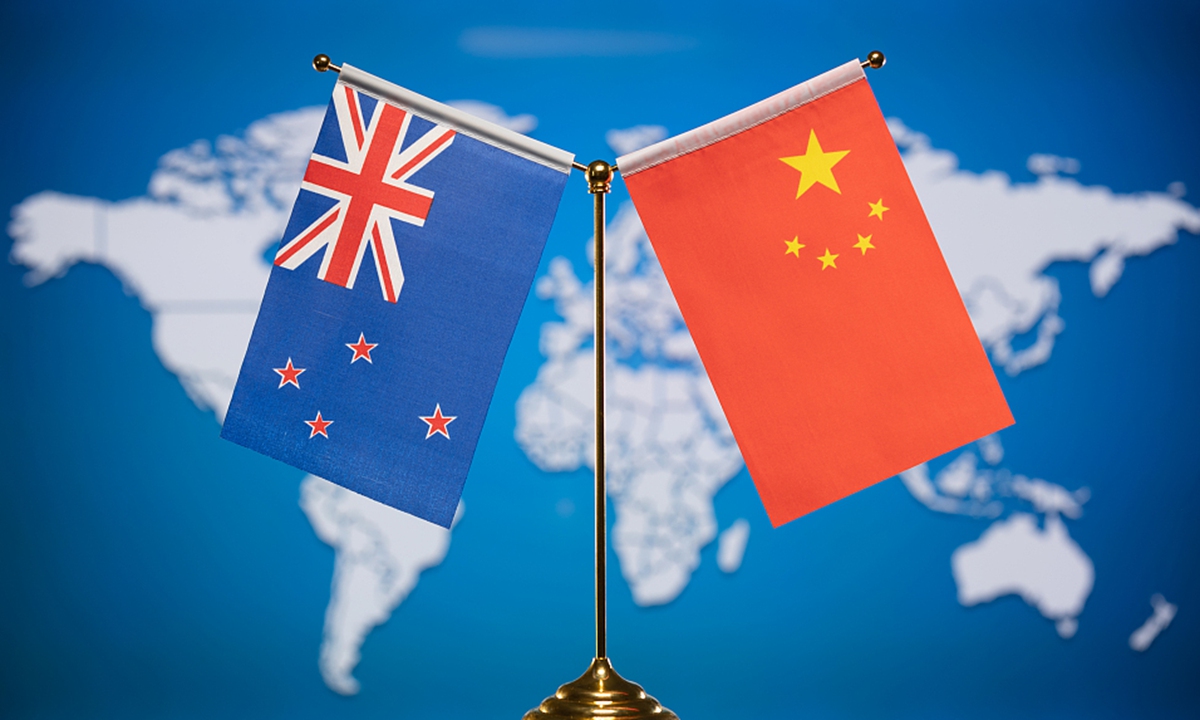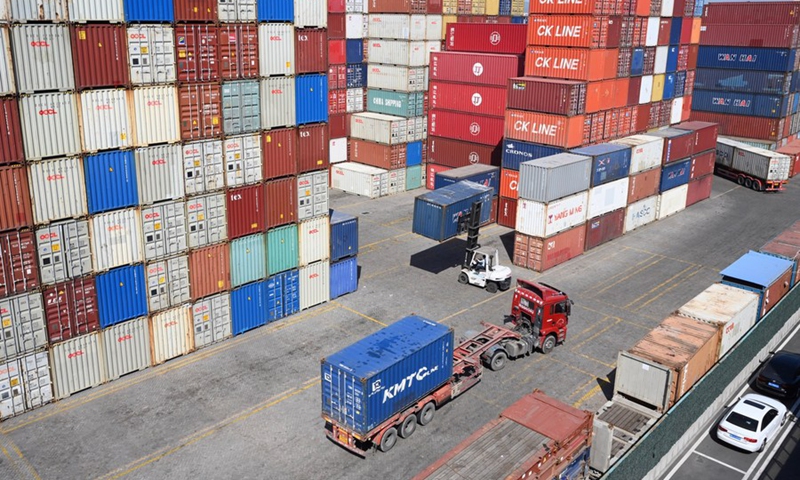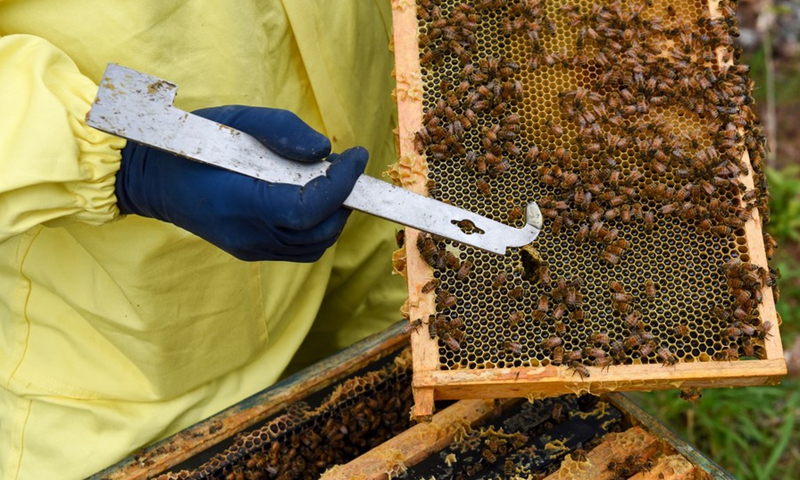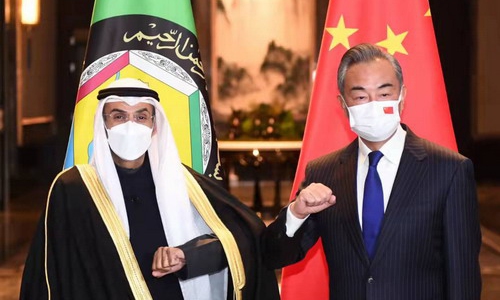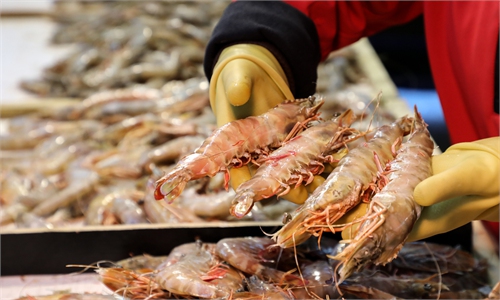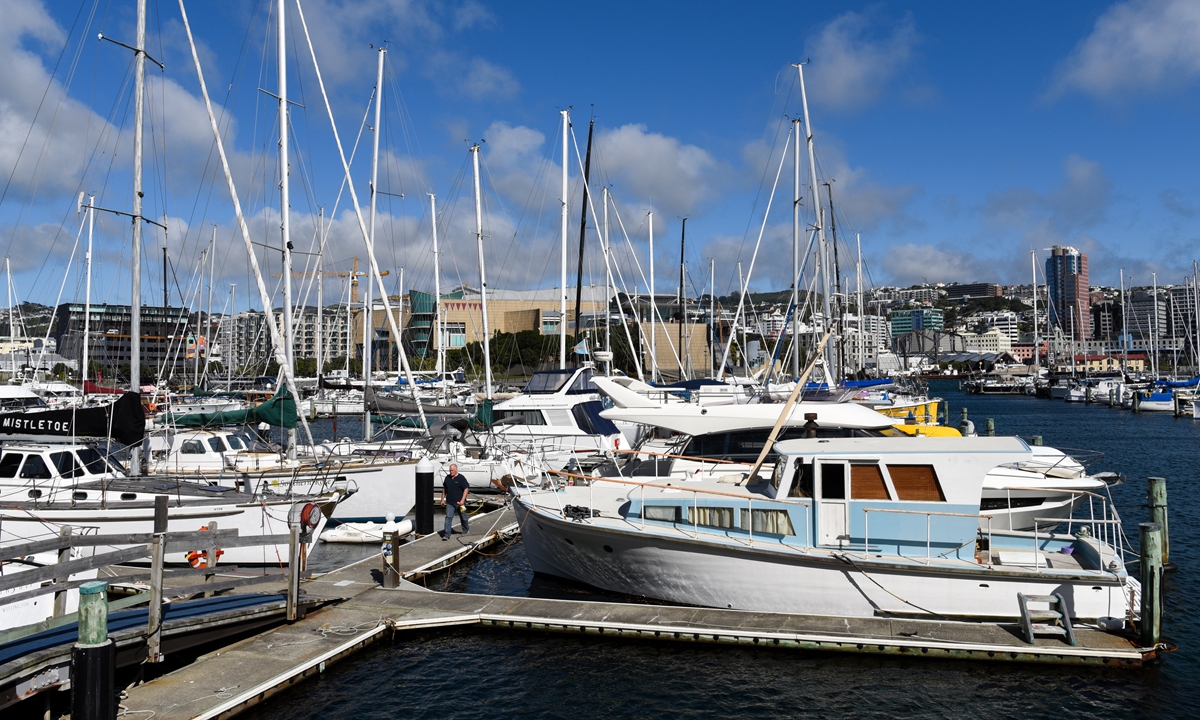
A man walks along a wharf in Wellington, capital of New Zealand, on September 22, 2020. Photo: Xinhua
China and New Zealand on Thursday officially implemented the Upgrade Protocol of the China-New Zealand Free Trade Agreement (FTA), in a major move that will not only help further expand bilateral economic and trade cooperation but also inject certain positive momentum in regional and global trade cooperation amid a slew of challenges ranging from the COVID-19 pandemic to rising geopolitical tensions.
As 2022 marks the 50th anniversary of the establishment of diplomatic relations between China and New Zealand, the implementation of the upgrade protocol fully reflects both sides' willingness to further strengthen and expand bilateral economic and trade cooperation by deepening the free trade partnership, China's Ministry of Commerce (MOFCOM) said in a statement.
Officially signed in January 2021, the upgrade protocol of the FTA comes after China and New Zealand have implemented the FTA since 2008 and have been actively expanding cooperation on multilateral free trade deals, including the Regional Comprehensive Economic Partnership (RCEP), which took effect at the beginning of this year.
The upgrade protocol between China and New Zealand also represents an upgrade from the RCEP. It reduces tariffs and non-tariff barriers, as well as expands cooperation in services trade and investment. For instance, China has agreed to eliminate tariffs on 12 timber and paper products imported from New Zealand over 10 years, while all New Zealand dairy exports to China will be tariff-free by 2024.
A Chinese company engaged in the dairy products business in New Zealand told the Global Times that the upgraded FTA will improve the competitiveness of its products in the Chinese market due to the tariff reduction. "We are optimistic about China's consumption upgrading and we have full confidence in a more friendly trade environment," the company said.
"In addition to the FTA upgrade, as of 1 January 2022, most dairy products exported to China are entitled to duty-free access, immediately saving businesses NZ$200 million ($138 million) in tariffs. Remaining costs will be removed in 2024," Damien O'Connor, New Zealand's Trade and Export Growth Minister, said on Thursday.
In investment, New Zealand has eased the screening threshold for investment from China, and committed to applying the same threshold to Chinese investment as it does to other members of the Comprehensive and Progressive Agreement for Trans-Pacific Partnership (CPTPP). The threshold for reviewing investments made by Chinese government investors has been lifted to NZ$100 million and NZ$200 million for non-government investors, significant increases from NZ$10 million previously.
China has also officially applied to join the CPTPP.
By reducing administrative costs, while providing a more transparent, stable and predictable investment environment, the upgrade protocol will encourage Chinese companies to invest in New Zealand, Bai Ming, deputy director of the International Market Research Institute of the MOFCOM, told the Global Times on Thursday.
Meanwhile, under the upgrade protocol, China has opened up the aviation, education, finance, elderly care and passenger transport sectors to New Zealand. In terms of work permits for special professions, New Zealand has doubled the quota for Putonghua teachers and Chinese tour guides to 300 and 200.
Officials from both sides hailed the implementation of the upgrade protocol on Thursday.
O'Connor said that the upgraded FTA will further accelerate New Zealand's economic recovery from COVID-19, removing an additional NZ$1.5 million in tariff costs, on top of those already delivered through the 2008 FTA.
At a press briefing in Beijing on Thursday, Chinese Foreign Ministry spokesperson Zhao Lijian said that China is "pleased and satisfied" to see the implementation of the upgrade protocol, which is of great significance for not only China and New Zealand but also global multilateralism and free trade.
"It reflects the firm determination of China and New Zealand to support multilateralism and free trade through practical actions, and is conducive to safeguarding the stability of global industrial and supply chains," Zhao said, adding that China stands ready to work with New Zealand to make further positive contributions to regional and global peace and development.
The upgrade protocol comes as certain regional and global powers, particularly the US and Australia, are actively seeking to stir up diplomatic and trade tension in the Asia Pacific region, while pursuing discriminatory and protectionist policies against Chinese businesses and products.
In the context of the anti-globalization sentiment, the upgraded China-New Zealand FTA is expected to boost bilateral economic and trade activities and provide a solid deterrent to decoupling and isolation, Bai said.
The China-New Zealand FTA was signed in 2008. It was the first such agreement China signed with a developed country. In 2016, the two sides launched negotiations to upgrade the FTA.
Since the two countries signed the FTA, bilateral trade has grown rapidly, with China having been New Zealand's largest trade partner, largest export destination and largest import source for years in a row. In 2021, bilateral trade hit a new record of $24.72 billion, about 5.6 times of level recorded in 2008, data from the MOFCOM showed.
